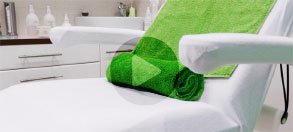Dr. Paradi Mirmirani, among your publications, you recently had a peer-reviewed manuscript titled, “Similar Response Patterns to 5%Topical Minoxidil Foam in Frontal and Vertex Scalp of Men with Androgenetic Alopecia: A Microarray Analysis.” Can you tell us in a simple manner, and 1-2 sentences, what the take away would be for an average person with hair thinning?
The clinical studies of minoxidil evaluated the crown only so the FDA approval and package insert recommend use for the crown area only. This study suggests that minoxidil has an effect in both the vertex(crown) and frontal scalp.
Rogaine (minoxidil) is a very popular product, do most patients only use it for the crown and do you think doctor instructions will change with this study release?
Most doctors already advise use of minoxidil in all areas with thinning. This study will add scientific credibility to the observation that minoxidil can be used in all areas with thinning.
How often do you do scalp biopsies on male pattern baldness patients?
Infrequently. I typically make the diagnosis after a careful history and clinical exam.
What general advice do you give to the typical male or female with androgenetic alopecia?
There are medical, surgical and cosmetic options- I encourage folks to explore all these options and find one that works best for them.
Do you ask all your hair thinning patients to try minoxidil, even if its not androgenetic?
I do advise minoxidil for many types of non-scarring (non-permanent) thinning.
What do you see as the most promising development in hair loss research in the next 5 years that will have practical/clinical application?
Treatments that target the underlying genetic or molecular abnormalities leading to hair thinning.
Read more hair expert interviews.


